CMMC Practice AC.L2-3.1.3 – Control CUI Flow: Control the flow of CUI in accordance with approved authorizations.
This Boston University guidance defines the requirements for handling and protecting information, including CUI. The document links to other useful sites (e.g. Data Classification Policy, Data Access Management Policies) that expand on the control of CUI and authorizations to access CUI. This guideline provides an example of Data Classification framework that defines categories for data. This document provides assessment guidance for conducting Cybersecurity Maturity Model Certification (CMMC) assessments for Level 2. This ISOO presentation describes CUI program and what it is that needs to be protected. The NC policy describes common security controls (e.g., proxies, gateways, routers, firewalls, guards, encrypted tunnels, web content filters, data loss prevention) and their application in controlling information flows. (See Section AC-4 – Information Flow Enforcement, p. 6) Information flow control regulates where information can travel within a system and between systems and without explicit regard to subsequent access to that information. Let’s talk about NIST 800-171 Control 3.1.3 -- Control the flow of CUI in accordance with approved authorizations.
Information flow control regulates where information can travel within a system and between systems (versus who can access the information) and without explicit regard to subsequent accesses to that information. Flow control restrictions include the following: keeping export-controlled information from being transmitted in the clear to the internet; blocking outside traffic that claims to be from within the organization; restricting requests to the internet that are not from the internal web proxy server; and limiting information transfers between organizations based on data structures and content.
Organizations commonly use information flow control policies and enforcement mechanisms to control the flow of information between designated sources and destinations (e.g., networks, individuals, and devices) within systems and between interconnected systems. Flow control is based on characteristics of the information or the information path. Enforcement occurs in boundary protection devices (e.g., gateways, routers, guards, encrypted tunnels, firewalls) that employ rule sets or establish configuration settings that restrict system services, provide a packet-filtering capability based on header information, or message-filtering capability based on message content (e.g., implementing key word searches or using document characteristics). Organizations also consider the trustworthiness of filtering and inspection mechanisms (i.e., hardware, firmware, and software components) that are critical to information flow enforcement.
Transferring information between systems representing different security domains with different security policies introduces risk that such transfers violate one or more domain security policies.
Organizations consider the shared nature of commercial telecommunications services in the implementation of security requirements associated with the use of such services. Commercial telecommunications services are commonly based on network components and consolidated management systems shared by all attached commercial customers and may also include third party-provided access lines and other service elements. Such transmission services may represent sources of increased risk despite contract security provisions. NIST SP 800-41 provides guidance on firewalls and firewall policy. SP 800-125B provides guidance on security for virtualization technologies.
In such situations, information owners or stewards provide guidance at designated policy enforcement points between interconnected systems. Organizations consider mandating specific architectural solutions when required to enforce specific security policies. Enforcement includes: prohibiting information transfers between interconnected systems (i.e., allowing access only); employing hardware mechanisms to enforce one-way information flows; and implementing trustworthy regrading mechanisms to reassign security attributes and security labels.
Further Discussion
Typically, companies will have a firewall between the internal network and the internet. Often multiple firewalls or routing switches are used inside a network to create zones to separate sensitive data, business units, or user groups. Proxy servers can be used to break the connection between multiple networks. All traffic entering or leaving a network is intercepted by the proxy, preventing direct access between networks. Companies should also ensure by policy and enforcement mechanisms that all CUI allowed to flow across the internet is encrypted.
